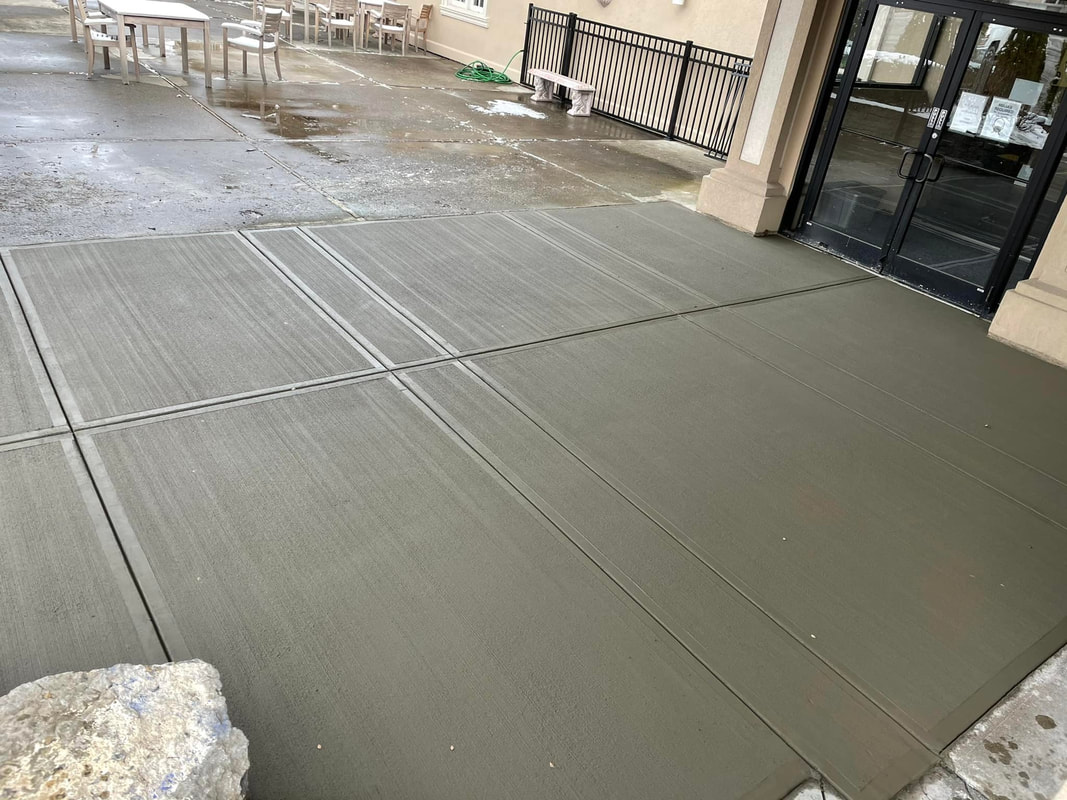What is a Commercial-Grade Concrete?Commercial-grade concrete refers to a type of concrete that has high compressive strength. This means it has greater resistance to cracking or breaking compared to ordinary concrete. In addition to being stronger, commercial-grade concrete also requires less maintenance and lasts longer. What makes it special? Commercial-grade concrete is used in construction projects such as bridges, buildings, highways, and parking lots. It’s often mixed with other materials like gravel, sand, and cement. Commercial-grade concrete comes in two main varieties: ready mix and precast. Ready mix concrete is poured into forms and then left to cure before it’s finished. Precast concrete is cast in place and cured before finishing. Commercial-grade concrete is often called premium or high-performance concrete because it has higher compressive strength and better durability than standard concrete. Premium concrete is also stronger, more durable, and harder to wear than regular concrete. High-performance concrete is ideal for building large structures such as roads, bridges, and buildings. A Blend of Stone, Sand, Cement, and GravelThe ingredients in commercial-grade concrete are similar to those found in normal concrete. The difference lies in the proportions of each ingredient. For example, the ratio of cement to aggregate (sand, stone, etc.) can be different from one batch to another. Cement is the most important component of concrete. It provides strength and helps bind all the other components together. When you see “cement” on a label, it usually indicates that the product contains Portland cement. Other types of cements include portlandite, pozzolanic cement, and blended cements. Aggregate is the second most important component of concrete after cement. It provides strength and improves the workability of the mixture. There are many kinds of aggregates including crushed rock, river stones, and recycled glass. Sand is an essential part of concrete. It adds weight, which gives concrete its structural integrity. Sand is added to concrete to make sure it doesn’t crack when it dries. Sand is also used to help control the consistency of the concrete. If too much water gets into the mix, the concrete will become very soft. Too little water causes the concrete to harden prematurely. Gravel is a common additive in concrete. It’s added to increase the density of the concrete and improve its performance. Gravel is sometimes referred to as coarse aggregate. Coarse aggregate is made up of small pieces of rocks and pebbles. Mixing concrete is easy if you follow these tips. First, add enough water to the dry ingredients to form a thick paste. Then stir well until the ingredients are evenly distributed. Next, pour the mixture into the forms and let it set for at least 24 hours after application. After curing, finish the surface by brushing on a sealer or applying a colored stain. Concrete application materials normally involve concrete floor sealants and concrete floor paint. What is The Water Absorption Level of a Commercial-Grade Floor?Water absorption level refers to how quickly concrete absorbs moisture. Concrete absorbs water through capillary action. Capillarity is the process by which liquids move along the surface of a material. This movement occurs naturally when the liquid touches the surface of the material. As concrete ages, it loses some of its ability to absorb water. Concrete surfaces exposed to extreme heat or humidity may have a lower water absorption rate. In this case, the concrete should be sealed with a waterproof coating before being installed. Concrete that has been exposed for long periods of time to sunlight may lose some of its strength. To prevent this, apply a protective coat of paint or epoxy resin to the surface of the concrete. Commercial-Grade Concrete RepairIf your concrete floor needs repair, there are several options available. You can use a patching compound to fill cracks and holes in the concrete. A patching compound is a thin layer of mortar mixed with sand and gravel. Once applied, the commercial-grade blend sets up within minutes. Patching compounds come in various colors and textures. They can be painted over or left natural. Another option is to replace the damaged area with new concrete. New concrete is stronger than old concrete because it has more calcium carbonate (CaCO3) in it. CaCO3 is the main ingredient in limestone. Limestone is one of the most abundant minerals found on Earth. Limestone is often used to create concrete. A third option is to install a floating slab. Floating slabs are poured directly onto existing concrete. Floating slabs are usually thicker than standard concrete. They provide extra support for heavy loads. How do I know if my concrete needs repair?There are many signs that indicate your concrete needs repair. Cracks in the concrete are the first sign that something is wrong. Cracking indicates that the concrete is losing strength. Cracks can appear anywhere from a few days after pouring to years later. If you notice any cracks, call an expert immediately. Cracks also occur where two different types of concrete meet. For example, a crack might develop between a concrete block wall and a concrete sidewalk. Other signs include: • Staining – If you see stains on your concrete, they could mean that the concrete is absorbing too much water. • Chipping – If you see chipped areas on your concrete, they may need repair. • Spalling – If you see spalling, it means that the concrete is deteriorating. • Fissures – If you see fissures, they could mean that your concrete is not strong enough to hold up against traffic. Where Can You Purchase Commercial-Grade Products?You can purchase commercial-grade products at home improvement stores like Home Depot and Lowes. These stores carry a wide variety of products, including concrete sealers, patches, and other materials. For expert application, professional concrete contractors use amazing products like fresh concrete, epoxy floor coating, and natural stone. They are much more knowledgeable about product quality and product dimensions you'll need compared to when you purchase online.
Meanwhile, retail purchases are also reliable as store staff also have sufficient product knowledge regarding concrete grades, commercial-grade sealers, and commercial-grade crack fillers. When purchasing these products, make sure to read the label carefully. Some products contain chemicals that are harmful to humans. Always follow the manufacturer’s instructions when using these products.
1 Comment
5/15/2024 07:14:17 am
This robust material is specifically designed to withstand substantial weight and stress, ensuring the structural integrity of buildings, bridges, and other infrastructure projects. Its formulation often includes carefully selected aggregates, advanced admixtures, and precise water-cement ratios to enhance its durability and performance.
Reply
Leave a Reply. |
|

